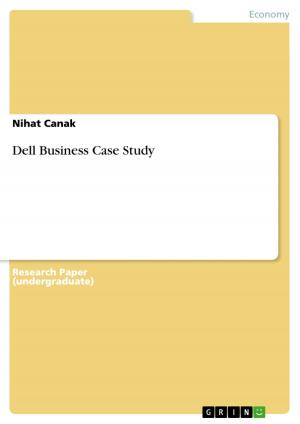| Author: | Raffaela C. M. Wallner | ISBN: | 9783640794584 |
| Publisher: | GRIN Publishing | Publication: | January 7, 2011 |
| Imprint: | GRIN Publishing | Language: | English |
| Author: | Raffaela C. M. Wallner |
| ISBN: | 9783640794584 |
| Publisher: | GRIN Publishing |
| Publication: | January 7, 2011 |
| Imprint: | GRIN Publishing |
| Language: | English |
Seminar paper from the year 2008 in the subject English - Miscellaneous, grade: 2,0, Vienna University of Economics and Business , language: English, abstract: The phenomenon of underground economy can be observed all around the world, regardless of a country´s state of development. It has been studied and discussed in literature for several decades. In the 1980s the size of the underground economy in the United States was higher than during World War II for the first time, and it continued to grow due to tax increases in the 1990s. In addition, globalization and the resulting greater competition as well as the increasing number of unregistered immigrants give rise to unrecorded activities. In this paper I will focus on the causes and effects of the underground economy in the United States. Therefore, I will first explain the main motivators for individuals to take action in the unofficial economy, such as a legal framework consisting of high tax schemes and social security burdens as well as the institutional quality in terms of bureaucracy and regulatory discretion. Second, I will examine some of the most affected sectors. In this context I will especially concentrate on underground immigrants, contraband trade, and money laundering as well as labor-intense services undertaken by not-registered workers. Finally, I will address the results and effects of the underground economy on the recorded one and its labor and money markets. In this section of the paper I will also show how the U.S. underground economy is related to other phenomena such as the budget deficit, the 'gray area phenomenon' and corruption. In the final part of the paper I will focus on possible solutions to reduce the extent of underground activities. I will especially emphasize some methods to measure and estimate invisible economic action on the one hand and on the implementation of policy engagement on the other. A brief conclusion in the end sums up the main points and provides an overview of the aspects developed in this paper.
Seminar paper from the year 2008 in the subject English - Miscellaneous, grade: 2,0, Vienna University of Economics and Business , language: English, abstract: The phenomenon of underground economy can be observed all around the world, regardless of a country´s state of development. It has been studied and discussed in literature for several decades. In the 1980s the size of the underground economy in the United States was higher than during World War II for the first time, and it continued to grow due to tax increases in the 1990s. In addition, globalization and the resulting greater competition as well as the increasing number of unregistered immigrants give rise to unrecorded activities. In this paper I will focus on the causes and effects of the underground economy in the United States. Therefore, I will first explain the main motivators for individuals to take action in the unofficial economy, such as a legal framework consisting of high tax schemes and social security burdens as well as the institutional quality in terms of bureaucracy and regulatory discretion. Second, I will examine some of the most affected sectors. In this context I will especially concentrate on underground immigrants, contraband trade, and money laundering as well as labor-intense services undertaken by not-registered workers. Finally, I will address the results and effects of the underground economy on the recorded one and its labor and money markets. In this section of the paper I will also show how the U.S. underground economy is related to other phenomena such as the budget deficit, the 'gray area phenomenon' and corruption. In the final part of the paper I will focus on possible solutions to reduce the extent of underground activities. I will especially emphasize some methods to measure and estimate invisible economic action on the one hand and on the implementation of policy engagement on the other. A brief conclusion in the end sums up the main points and provides an overview of the aspects developed in this paper.















